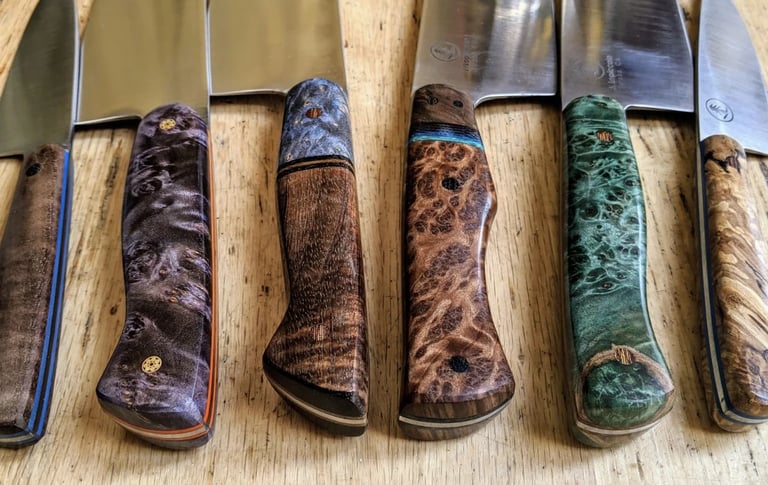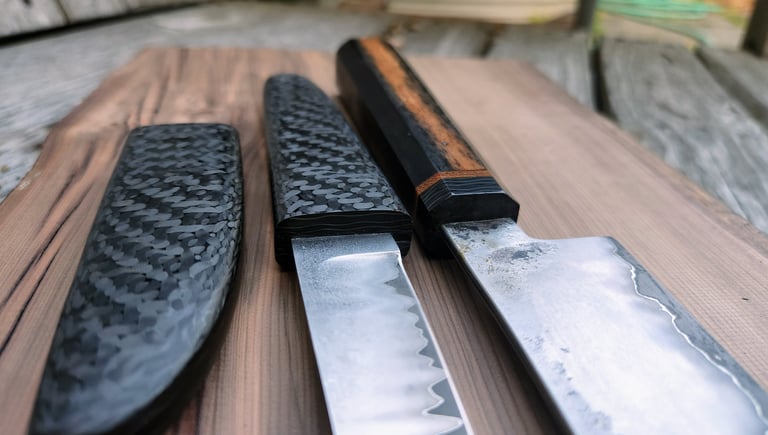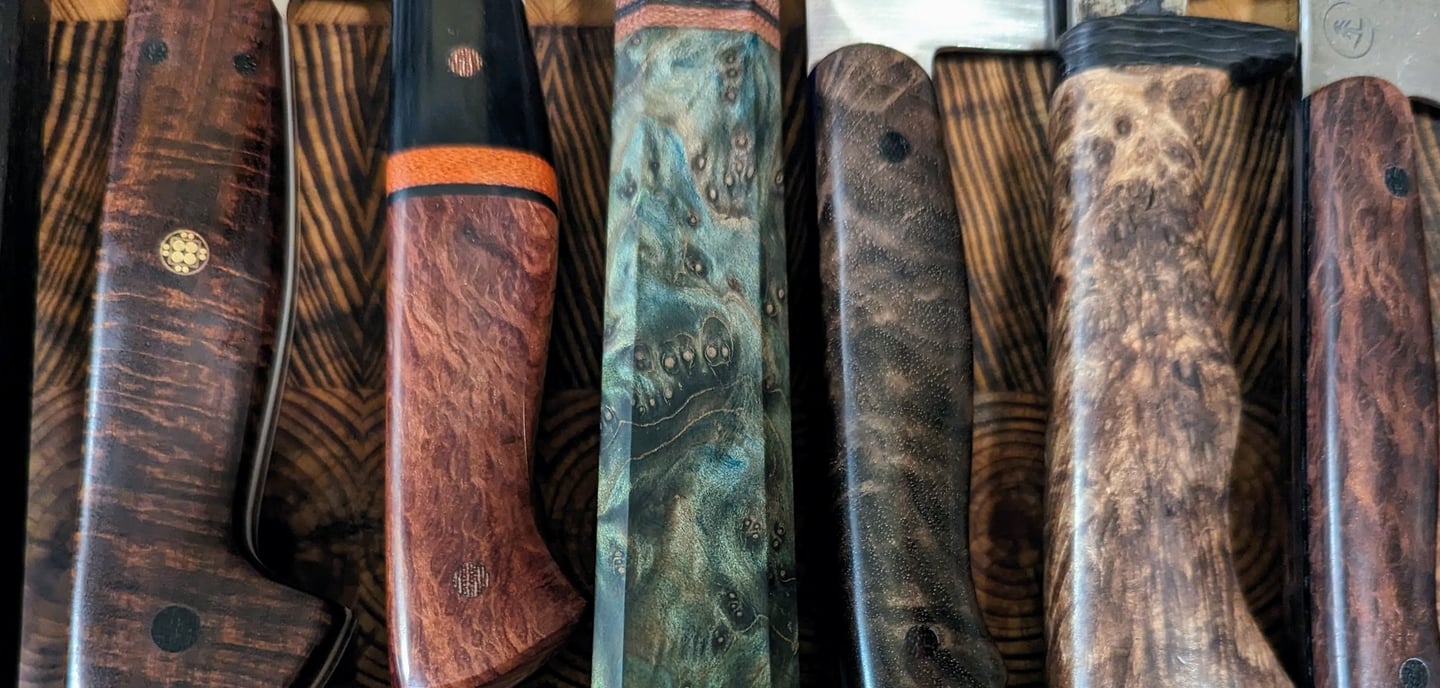

About my knives:
I design all of my knives with their intended use in mind. Edge geometry is everything in a blade. It doesn't matter how hard the blade is and what kind of steel you use if the geometry isn't right.
My kitchen cutlery is heat treated hard and ground thin so the fine edge geometry is supported for excellent cutting ability. Outdoor knives are left slightly thicker behind the edge to withstand the impact of tasks such as chopping and batoning wood.
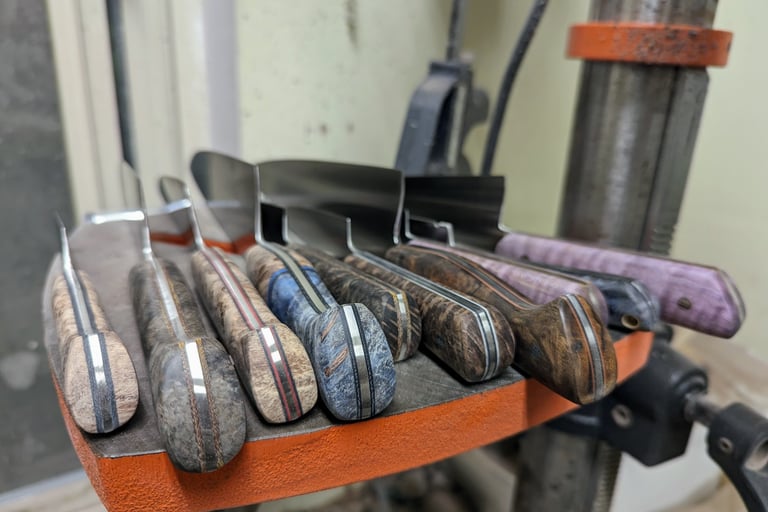


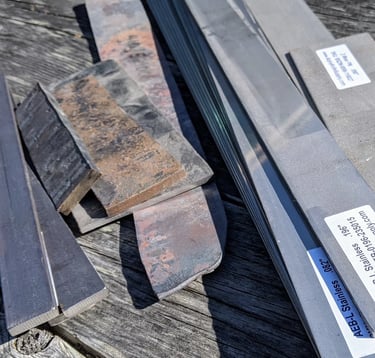
Knife Steels
I use a variety of different steels depending on the application of the knife. Some of my favorite ones are:
AEB-L Swedish Razor Steel:
This is a high carbon stainless steel that is deceptively simple in its composition. It has very fine grain and just enough carbon in it to get very hard in the heat treatment with enough chromium in it to be stainless and a little leftover for making very hard and very fine chromium carbides These give this steel some added edge retention. AEB-L is one of the toughest steels out there at high hardness which makes it an excellent steel for kitchen cutlery. If you're one of those people that thinks that carbon steel knives from "back in the day" are better, you've never tried AEB-L.
A2 Tool Steel:
A tool steel that occupies a nice sweet spot in terms of toughness, edge retention, and sharpenability. It has a higher percentage of chromium carbides than AEB-L as well as more carbon. This gives it an increase in edge retention but it lacks the corrosion resistance of AEB-L or some of the particle metallurgy steels.
52100:
Used industrially in bearings, 52100 makes an excellent blade, especially for kitchen cutlery. It has good toughness and fine grain with a little extra carbon and chromium to make their respective carbides. I use this for some of my forged blades.
Pattern Welded/Damascus/San Mai:
This is a very broad category but consists of steels that are comprised of two or more different alloys that have been forge welded together.


Handle Materials
Wood:
Ok, so I'm something of a wood hoarder. Lucky for you, this means I always have a wide variety of gorgeous handle materials on hand. I love to use burls and curly and spalted woods from all over, but thankfully Humboldt County has lots to offer locally.
Almost all the wooden handles I use have been stabilized by K&G (the gold standard in resin impregnation) to make them dimensionally stable, hard, and take a beautiful polish. The only exceptions are woods that are already incredibly dense and oily and won't take the stabilizant (cocobolo, African blackwood, verawood, etc.). Some blocks of wood are dyed prior to stabilization to add an element of color while still maintaining the beautiful wood grain.
Synthetic Materials:
I occasionally use synthetic materials in my handles as well. Largely this is either Micarta (canvas, linen, or paper bound in a phenolic resin), G10 (fiberglass sheet layered in resin), or carbon fiber. While I use them mostly for colorful accents to wood handles or bolster materials, they make excellent and durable handles on their own.
